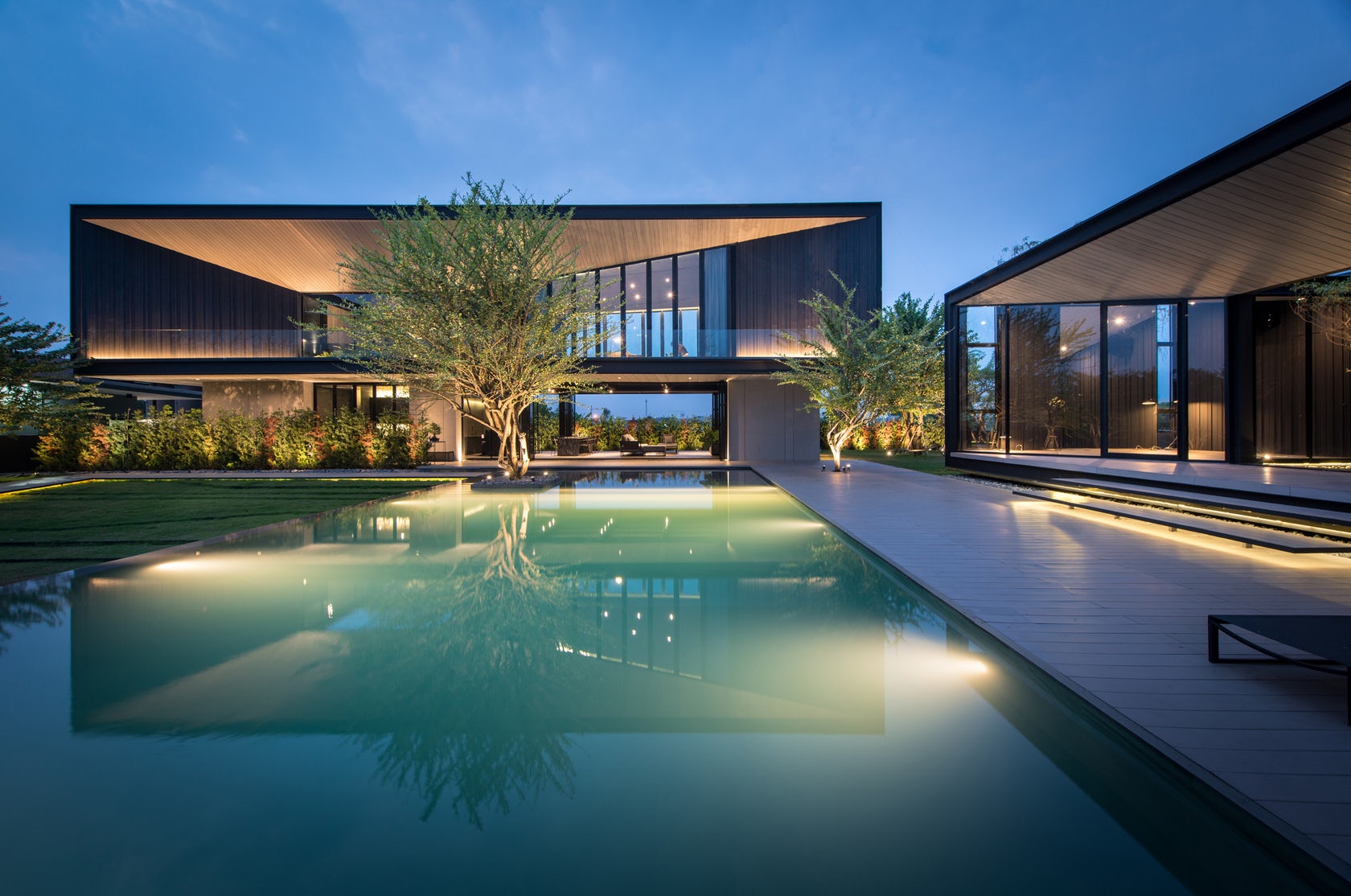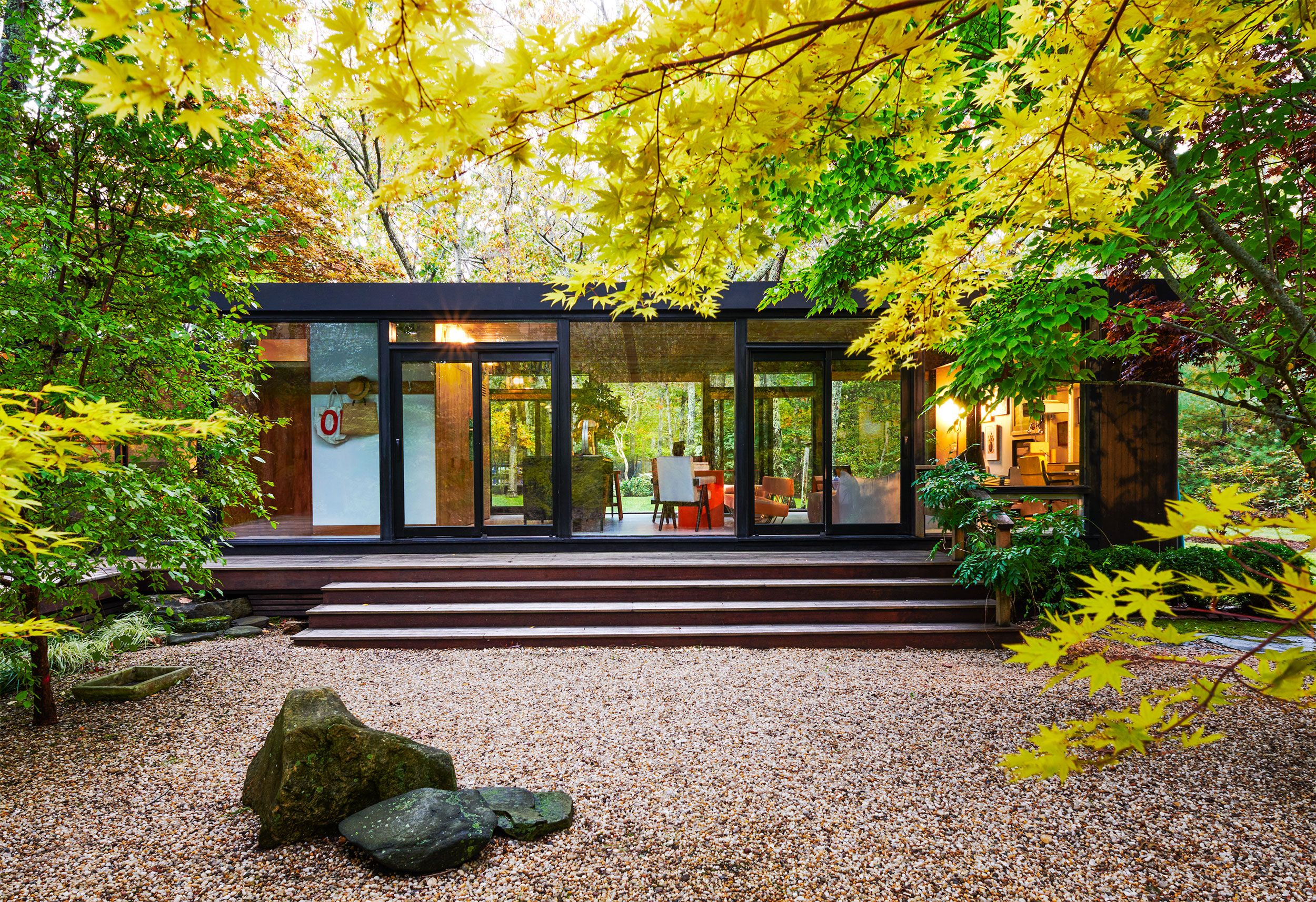Advanced Techniques in Sustainable Residential Building for Urban Communities
Advanced Techniques in Sustainable Residential Building for Urban Communities
Blog Article
Checking Out the Perks of Modern Home Design in Contemporary Design
The expedition of contemporary home architecture within modern style reveals an innovative interaction between visual charm and practical efficiency. By focusing on elements such as power performance, improved indoor air top quality, and liquid transitions between indoor and exterior areas, modern layouts cater to the evolving requirements of today's property owners.
Enhanced Energy Effectiveness
In modern home architecture, one often uncovers a considerable concentrate on improved energy performance, which is important in attending to rising energy costs and ecological issues. Architects and building contractors are progressively incorporating innovative style approaches and advanced innovations to optimize energy usage in household areas. This standard change is driven by a growing understanding of sustainability and the requirement to lower carbon impacts.
Key features of energy-efficient homes include remarkable insulation, energy-efficient home windows, and using lasting products. These layout elements operate in tandem to reduce warm loss in wintertime and lower warmth gain in summer season, ensuring a comfortable living setting year-round. Additionally, modern homes typically integrate sustainable energy resources, such as photovoltaic panels, which not just lower dependence on non-renewable energy but also offer potential cost financial savings for homeowners.

Enhanced Indoor Air Quality
Focusing on improved interior air quality has actually come to be a hallmark of contemporary home architecture, as house owners increasingly identify the importance of a healthy and balanced living environment. Contemporary style incorporates sophisticated products, ventilation systems, and wise technology to promote cleaner air within household areas.

Furthermore, the style of modern-day homes regularly highlights natural ventilation, permitting fresh air to distribute and reducing dependence on artificial environment control. Strategically put windows, skylights, and vents promote airflow, adding to a setting that combats indoor air stagnancy.
On top of that, incorporating biophilic style components, such as indoor plants, not only improves visual allure yet also serves to detoxify the air. modern home architecture melbourne. Overall, by focusing on enhanced interior air quality, modern home architecture not only enhances the comfort and wellness of its passengers however additionally cultivates a lasting living setting that straightens with modern wellness and health criteria

Smooth Indoor-Outdoor Link
As modern property owners seek to improve their living experiences, the principle of a smooth indoor-outdoor link has acquired considerable traction in contemporary design. This layout ideology obscures the boundaries between interior spaces and the native environment, promoting an unified conjunction that enhances day-to-day live.
Building components such as large gliding glass doors, huge home windows, and open flooring strategies promote this link, enabling areas to move easily from indoors to outdoors. These features not only produce a feeling of visibility yet also motivate interaction with nature, which can have profound impacts on psychological well-being.
Moreover, a seamless indoor-outdoor link enhances the performance of living spaces. Outdoor areas can function as extensions of the home, fitting visite site various activities such as dining, entertaining, or relaxation. By integrating landscaping and outside furnishings that see complement interior decoration, property owners can create inviting environments that satisfy diverse way of lives.
On top of that, this architectural approach often emphasizes sustainability, as all-natural air flow and passive cooling methods decrease dependence on man-made climate control. Ultimately, accepting a smooth indoor-outdoor link fosters a more lively, dynamic, and health-conscious living experience.
Maximizing Natural Light
All-natural light is a key aspect in modern-day home style, considerably improving both visual allure and occupant health. The tactical consolidation of large windows, skylights, and open areas allows natural light to flooding insides, creating dynamic and welcoming atmospheres. This layout method not just elevates the visual allure of a home but likewise cultivates a connection to the outdoors, advertising a feeling of serenity and visibility.
Furthermore, making the most of all-natural light adds to energy effectiveness, reducing reliance on man-made lighting during the day. Houses made with this principle in mind typically include reflective surfaces and light-colored materials that magnify the effects of natural light, making certain that spaces feel brilliant and airy. This not only boosts comfort however also reduces energy prices.
Additionally, exposure to natural light has been linked to enhanced state of mind and performance among passengers. By creating well-lit spaces that motivate interaction and task, modern-day architecture can dramatically impact the high quality of life within this link the home. Inevitably, the thoughtful assimilation of natural light is a trademark of modern layout, mixing functionality with elegance while fostering a much healthier living environment.
Personalization and Adaptability
The emphasis on maximizing natural light in modern-day home architecture perfectly matches the concepts of modification and flexibility. This architectural strategy caters to individual preferences, permitting homeowners to tailor their living spaces to fulfill their distinct needs and way of livings. Modification in style enables the assimilation of individual aesthetics, whether via the option of materials, shade schemes, or spatial setups.
Flexibility is an additional foundation of contemporary building patterns, helping with flexible living atmospheres that can develop in time. Open up flooring plans, movable dividings, and multifunctional areas are essential attributes that support vibrant living setups. These elements empower home owners to produce areas that can change for different purposes-- whether for job, leisure, or celebrations-- enhancing use without compromising design.
Additionally, the integration of clever home technology better magnifies modification. House owners can regulate illumination, temperature level, and safety and security systems easily, making sure that convenience and benefit are extremely important. This blend of customization and adaptability is necessary in dealing with the varied needs of contemporary life, making modern homes not only visually attractive yet additionally extremely useful. Inevitably, personalization and versatility in modern-day home architecture foster a deeper link in between people and their home.
Conclusion
In summary, modern-day home architecture in contemporary layout offers numerous advantages, including improved power effectiveness, enhanced interior air top quality, seamless indoor-outdoor links, optimized all-natural light, and raised modification choices. These aspects collectively add to much healthier living settings and advertise sustainable practices, eventually profiting both house owners and the more comprehensive community. The innovative integration of aesthetic appeals and performance within modern architecture not just raises the high quality of life but also sustains a much more environmentally conscious future.
Report this page